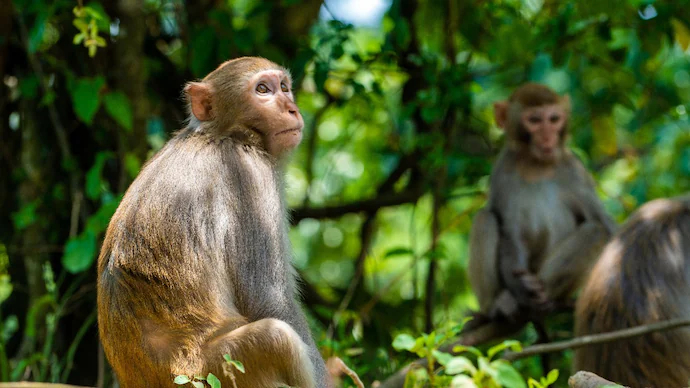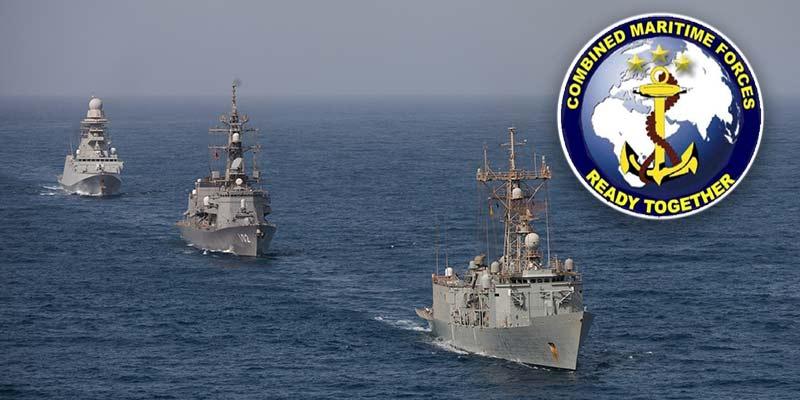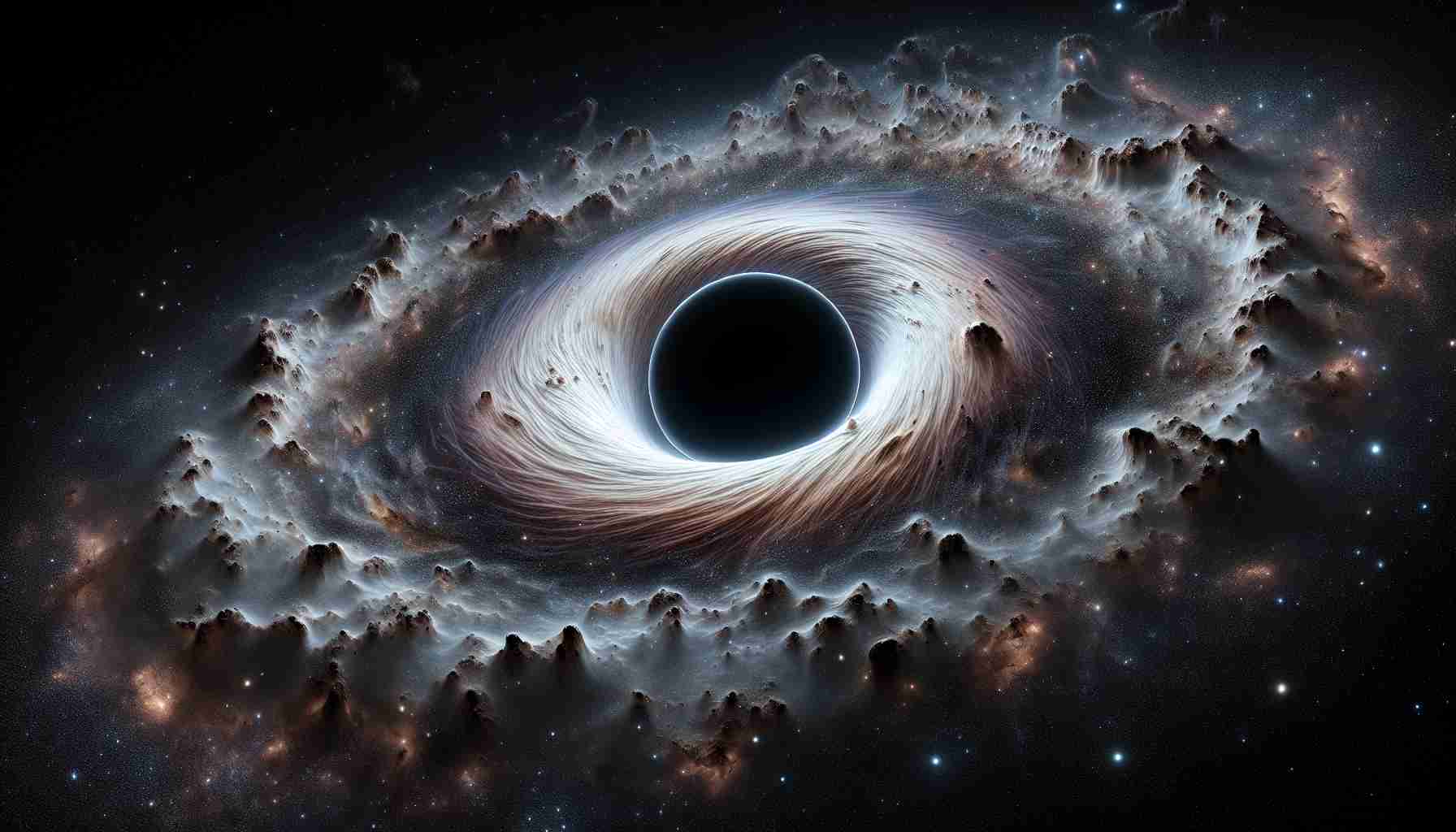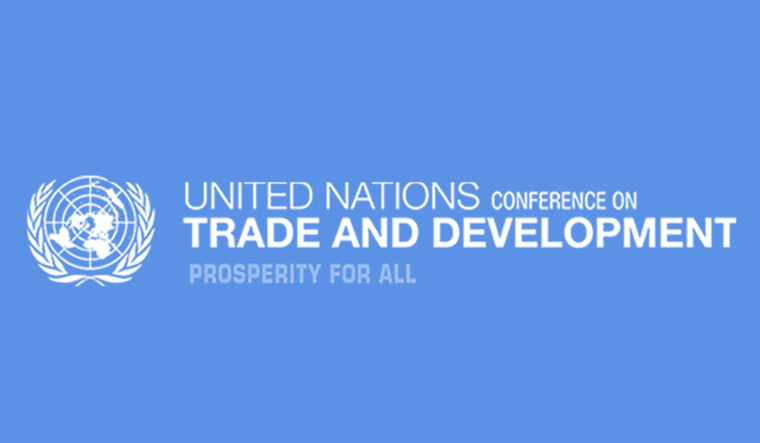B virus

- 17 Apr 2024
Why is it in the News?
A 37-year-old man wounded by a wild monkey in Hong Kong is in intensive care suffering from infection with B virus.
What is B virus?
- B virus, also known as herpes B virus or Macacine herpesvirus 1 (McHV-1), is a type of herpesvirus found in macaque monkeys, particularly rhesus macaques.
- While asymptomatic in these animals, it can cause severe neurological complications, including encephalitis, in humans if transmitted through bites, scratches, or contact with infected bodily fluids.
Is B virus infection fatal??
- B virus infections in humans are rare but potentially fatal, with symptoms ranging from fever and headache to neurological dysfunction and death.
- Of the 50 cases reported in the US, 21 have died.
- Prompt treatment with antiviral medication is essential if exposure to B virus occurs, and preventive measures are crucial for individuals working with or handling macaques.
How does it spread??
- The transmission of this virus among humans is rare.
- So far, only one case of human-to-human transmission has been recorded.
What are the symptoms of B virus infection??
- Disease onset typically occurs within 1 month of exposure, although the actual incubation period can be as short as 3–7 days.
- The common symptoms seen during the infection are:
- Fever, headache, myalgia, and localized neurologic symptoms (e.g., pain, numbness, itching) might occur near the wound site.
- Lymphadenitis, lymphangitis, nausea, vomiting, and abdominal pain also can occur.
Treatment:
- The treatment for B virus includes providing antiviral medications.
Green Bonds (SGrBs)

- 17 Apr 2024
Why is it in the News?
Recently, the RBI approved FIIs such as insurance companies, pension funds, and sovereign wealth funds to invest in India's Sovereign Green Bonds (SGrBs), which finance projects aiming to advance India's shift to a low-carbon economy.
What are Green Bonds?
- Green bonds are bonds issued by any sovereign entity, inter-governmental groups or alliances, and corporates with the aim that the proceeds of the bonds are utilised for projects classified as environmentally sustainable.
- The framework for the sovereign green bond was issued by the government on November 9, 2022.
Why are these bonds important?
- Over the last few years, Green Bonds have emerged as an important financial instrument to deal with the threats of climate change and related challenges.
- According to the International Finance Corporation (IFC), a World Bank Group’s institution, climate change threatens communities and economies, and it poses risks to agriculture, food, and water supplies.
- A lot of financing is needed to address these challenges.
- It’s critical to connect environmental projects with capital markets and investors and channel capital towards sustainable development – and Green Bonds are a way to make that connection.
When did Govt plan these bonds?
- In August 2022, the government said it stands committed to reducing the Emissions Intensity of GDP by 45 percent from the 2005 level by 2030 and achieving about 50 percent cumulative electric power installed capacity from non-fossil fuel-based energy resources by the same year.
- In line with the commitment to significantly reduce the carbon intensity of the economy, the Union Budget 2022-23 announced to issue of Sovereign Green Bonds.
- The country’s climate actions have so far been largely financed from domestic resources and it is now targeting the generation of additional global financial resources.
- The issuance of the Sovereign Green Bonds will help the Indian government in tapping the requisite finance from potential investors for deployment in public sector projects aimed at reducing the carbon intensity of the economy.
Where will the proceeds go?
- The government will use the proceeds raised from SGrBs to finance or refinance expenditure (in parts or whole) for various green projects, including renewable energy, clean transportation, energy efficiency, climate change adaptation, sustainable water and waste management, pollution and prevention control, and green buildings.
- In renewable energy, investments will be made in solar, wind, biomass, and hydropower energy projects.
Combined Maritime Forces (CMF)

- 17 Apr 2024
Why is it in the News?
The Indian Navy successfully intercepted and apprehended a dhow in the Western Arabian Sea recently and seized 940 kilograms of contraband narcotics.
About the Combined Maritime Forces (CMF):
- The Combined Maritime Forces (CMF) is a Bahrain-based multinational naval partnership dedicated to fostering security, stability, and prosperity throughout vital international waterways.
- Comprised of five task forces, CMF's primary objectives include countering terrorism, preventing piracy, enhancing regional cooperation, and maintaining a safe maritime environment.
- CMF's efforts focus on eliminating violent extremism and terrorist networks in its operational areas, collaborating with regional and global partners to bolster security and stability, assisting in capacity-building for regional maritime capabilities, and responding to environmental and humanitarian crises when needed.
- The five task forces within CMF are:
- CTF 150: Gulf of Oman Security and Counter-Terrorism
- CTF 151: Counter-piracy operations
- CTF 152: Arabian Gulf Security and Cooperation
- CTF 153: Red Sea and Gulf of Aden security and cooperation
- CTF 154: Maritime security training
- CMF comprises a diverse group of nations, each voluntarily contributing to the organization's efforts to maintain security and stability in international waters.
- Participating nations include:
- Australia, Bahrain, Belgium, Brazil, Canada, Colombia, Denmark, Ecuador, Egypt, France, Germany, Greece, India, Iraq, Italy, Japan, Jordan, Kenya, Republic of Korea, Kuwait, Malaysia, the Netherlands, New Zealand, Norway, Pakistan, the Philippines, Poland, Portugal, Qatar, Saudi Arabia, Seychelles, Singapore, Spain, Thailand, Türkiye, UAE, United Kingdom, United States, and Yemen.
- Members have the flexibility to contribute in various ways, from providing liaison officers at CMF's headquarters in Bahrain to supplying warships, support vessels, and maritime reconnaissance aircraft.
- CMF can also request support from warships not explicitly assigned to the organization.
- The headquarters of CMF is co-located with the US Naval Central Command and US Navy Fifth Fleet at Naval Support Activity (NSA) Bahrain.
- CMF is commanded by a US Navy Vice Admiral, with a UK Royal Navy Commodore serving as the Deputy Commander. Senior staff roles at CMF's headquarters are filled by personnel from member nations, ensuring a diverse and collaborative environment.
- Together, these task forces enable CMF to effectively address a wide range of challenges and promote a more secure maritime domain for all nations.
Gaia-BH3

- 17 Apr 2024
Why is it in the News?
European astronomers have made a groundbreaking discovery by identifying Gaia-BH3, a colossal black hole located just 2,000 light years away from Earth within the Milky Way, revolutionizing our comprehension of star formation.
What Is Gaia-BH3?
- Gaia-BH3, a stellar black hole in the Milky Way galaxy, has been identified as the most massive one discovered to date.
- The European Space Agency's Gaia mission detected Gaia-BH3 due to its distinctive 'wobbling' effect on a companion star orbiting it.
- Through the use of the Very Large Telescope at the European Southern Observatory in Chile's Atacama Desert and other ground-based observatories, researchers confirmed its enormous mass.
- With a mass 33 times greater than our sun, Gaia-BH3 is situated in the Aquila constellation at a distance of 1,926 light-years from Earth, earning it the title of the second-closest known black hole.
- Gaia BH1, located about 1,500 light-years away, remains the closest known black hole to Earth with a mass approximately 10 times that of our sun.
- While Gaia-BH3 holds the distinction of being the most massive stellar black hole in our galaxy, it pales in comparison to Sagittarius A*, the supermassive black hole at the Milky Way's center, which boasts a staggering mass of roughly 4 million times that of the sun.
Difference Between Stellar and Supermassive Black Holes:
- Stellar and supermassive black holes are two distinct types of cosmic phenomena, each with unique characteristics and origins.
- Stellar-mass black holes result from the gravitational collapse of a single star or the merger of two neutron stars, resulting in masses comparable to stars.
- Their mass typically ranges from three to fifty times that of our sun.
- In contrast, supermassive black holes boast a mass exceeding 50,000 times the solar mass, often reaching into the millions or billions.
- The formation of supermassive black holes remains a mystery to scientists, as they are too massive to have formed from a single star's collapse.
- Their consistent presence at the center of galaxies suggests a potential connection to galactic formation.
- While our understanding of these cosmic giants continues to evolve, one thing is clear: both stellar and supermassive black holes are awe-inspiring fixtures in our universe.
United Nations Conference on Trade and Development (UNCTAD)

- 17 Apr 2024
Why is it in the News?
Global trade dynamics are expected to remain sluggish in 2024, the United Nations Conference on Trade and Development (UNCTAD) has warned.
Key Highlights of the Report:
- UNCTAD’s latest projections indicate global growth of 2.6 percent in 2024, slightly slower than in 2023.
- This marks the third consecutive year in which the global economy will grow at a slower pace than before the pandemic when the average rate for 2015–2019 was 3.2 percent.
India’s growth is expected to be marginally lower than in 2023:
- Regarding India, the report stated that the economy grew at 6.7 percent in 2023 and is expected to be marginally lower at 6.5 percent in 2024.
- It noted that the expansion in 2023 was influenced by strong public investment and the services sector, which received a boost from robust local demand for consumer services along with assured external demand for business services exports.
- The Reserve Bank of India (RBI) is expected to keep interest rates constant in the near term, while strong public investment expenditures will offset restrained public consumption spending.
About the United Nations Conference on Trade and Development (UNCTAD):
- The United Nations Conference on Trade and Development (UNCTAD) is an intergovernmental organization established in 1964 to promote the interests of developing countries in global trade.
- With its headquarters in Geneva, Switzerland, UNCTAD has 195 member states and collaborates with numerous nongovernmental organizations worldwide.
- The organization focuses on formulating policies related to various aspects of development, including trade, aid, transport, finance, and technology.
- UNCTAD plays a crucial role in addressing the concerns of developing countries regarding international institutions, such as the World Trade Organization (WTO), the International Monetary Fund (IMF), and the World Bank.
- By providing a platform for these countries to discuss and tackle their unique challenges, UNCTAD contributes to global economic development and reduces inequalities.
- Some notable achievements of UNCTAD include the establishment of the Global System of Trade Preferences (now replaced by the World Trade Organization), which reduces tariffs and removes non-tariff trade barriers, the Common Fund for Commodities, providing financial assistance to countries dependent on commodity exports, and various agreements for debt relief.
- In recent years, UNCTAD has focused on addressing globalization challenges and helping the least developed countries integrate into the global economy.
